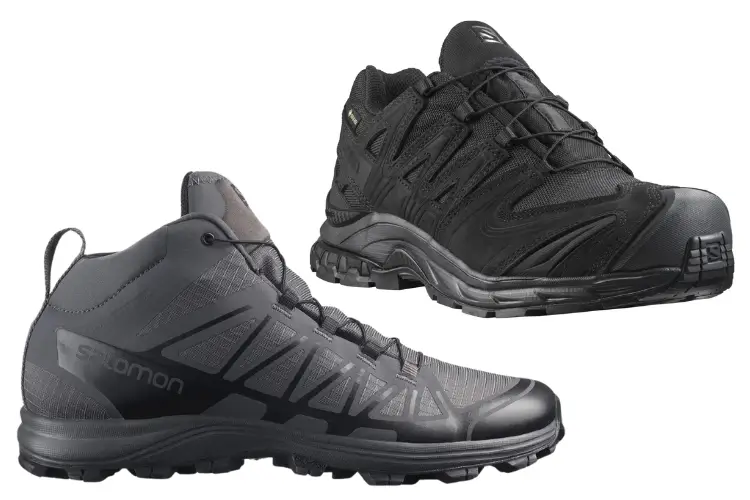In demanding professions and outdoor pursuits, the reliability of your equipment can make all the difference. Tactical gear—ranging from boots and pants to vests and gloves—is designed to withstand harsh conditions while providing maximum functionality. Central to this performance is the material from which the gear is made. This article explores the best materials for tactical gear, focusing on tactical boots and pants, and explains why they outperform others in the field.

The Crucial Role of Material Selection
Choosing the right material is not just about durability; it’s about comfort, protection, and efficiency. The materials used in tactical gear must balance these factors to meet the rigorous demands of military personnel, law enforcement officers, and outdoor enthusiasts. The ideal material enhances performance, reduces fatigue, and withstands environmental challenges.
Tactical Boots: Stepping Forward with Superior Materials
Full-Grain Leather: The Benchmark of Durability
Full-grain leather is often the top choice for tactical boots due to its unmatched strength and longevity.
- Exceptional Durability: Retains the toughest outer layer of the hide, making it highly resistant to wear and tear.
- Water Resistance: Naturally repels moisture, keeping feet dry in wet conditions.
- Breathability: Allows air circulation, reducing sweat and odor buildup.
- Comfort: Molds to the wearer’s foot over time for a personalized fit.
A study by the Leather Research Laboratory found that boots made from full-grain leather last up to 50% longer than those made from synthetic materials, emphasizing its value in long-term use.
Nylon and Polyester Blends: Balancing Weight and Strength
Incorporating nylon and polyester into boot construction reduces weight without sacrificing durability.
- Lightweight: Eases fatigue during extended wear.
- Abrasion Resistance: Withstands rough terrain and harsh environments.
- Quick-Drying: Ideal for operations involving water exposure.
- Flexibility: Enhances comfort and mobility.
These synthetic materials are often combined with leather to create a boot that offers both sturdiness and agility.
Waterproof Membranes: Keeping Feet Dry
Materials like Gore-Tex are used to create waterproof yet breathable barriers within boots.
- Waterproofing: Prevents water ingress while allowing moisture from sweat to escape.
- Comfort: Maintains a dry interior environment, reducing the risk of blisters.
- Versatility: Suitable for various climates and weather conditions.
According to Gore-Tex, footwear incorporating their membrane technology can improve foot comfort by up to 25%, highlighting its impact on performance.
Tactical Pants: Materials That Move with You
Ripstop Fabric: Strength Woven In
Ripstop fabric is engineered with a special reinforcing technique that makes it resistant to tearing and ripping.
- Durability: The crosshatch pattern prevents small tears from spreading.
- Lightweight: Provides strength without added bulk.
- Breathability: Allows air flow, keeping the wearer cool.
- Versatility: Suitable for a range of environments and activities.
Poly-Cotton Blends: Comfort Meets Function
Blending polyester and cotton combines the benefits of both materials.
- Softness: Cotton offers a comfortable feel against the skin.
- Moisture-Wicking: Polyester pulls sweat away from the body.
- Durability: Enhanced resistance to wrinkles and shrinking.
- Ease of Care: Machine washable and quick-drying.
Stretch Fabrics: Unrestricted Mobility
Adding spandex or elastane creates stretchable fabrics ideal for tactical pants.
- Flexibility: Allows for a full range of motion, crucial in active situations.
- Fit: Provides a snug yet comfortable fit that adapts to movement.
- Resilience: Maintains shape over time, even with frequent use.
Why These Materials Outperform Others
The superiority of these materials lies in their ability to meet the specific needs of tactical applications:
- Durability: High-quality materials withstand harsh conditions, reducing the frequency of replacements.
- Comfort: Breathable and flexible fabrics enhance comfort during prolonged wear.
- Functionality: Features like moisture-wicking and quick-drying improve performance in various environments.
- Protection: Materials offer resistance against elements like water, heat, and abrasions.
A survey by the National Tactical Officers Association revealed that 85% of respondents experienced improved operational efficiency when using gear made from advanced materials, underscoring their importance in the field.
Key Materials at a Glance
Here’s a summary of the best materials and their standout qualities:
- Full-Grain Leather (Boots): Durability, water resistance, breathability.
- Nylon/Polyester Blends (Boots and Pants): Lightweight, abrasion resistance, quick-drying.
- Ripstop Fabric (Pants): Tear resistance, lightweight strength.
- Poly-Cotton Blends (Pants): Comfort, moisture management, easy care.
- Stretch Fabrics (Pants): Flexibility, fit, resilience.
- Gore-Tex and Waterproof Membranes (Boots): Waterproofing, breathability.
Conclusion
Selecting gear made from the best materials is essential for anyone relying on tactical equipment. Full-grain leather and advanced synthetic fabrics offer unmatched durability and comfort in boots, while ripstop fabric and stretch materials enhance the functionality of tactical pants. These materials outperform others by providing the necessary balance of strength, flexibility, and protection required in demanding situations.
Investing in high-quality materials not only improves performance but also ensures longevity, making it a smart choice for professionals and enthusiasts alike. By understanding the benefits of these materials, you can make informed decisions and equip yourself with gear that stands up to any challenge.



